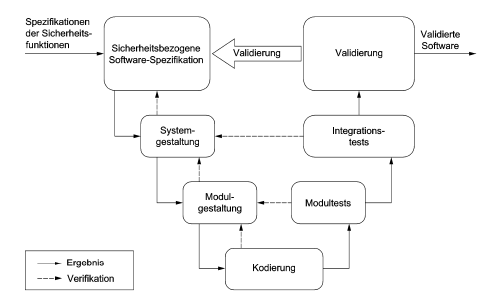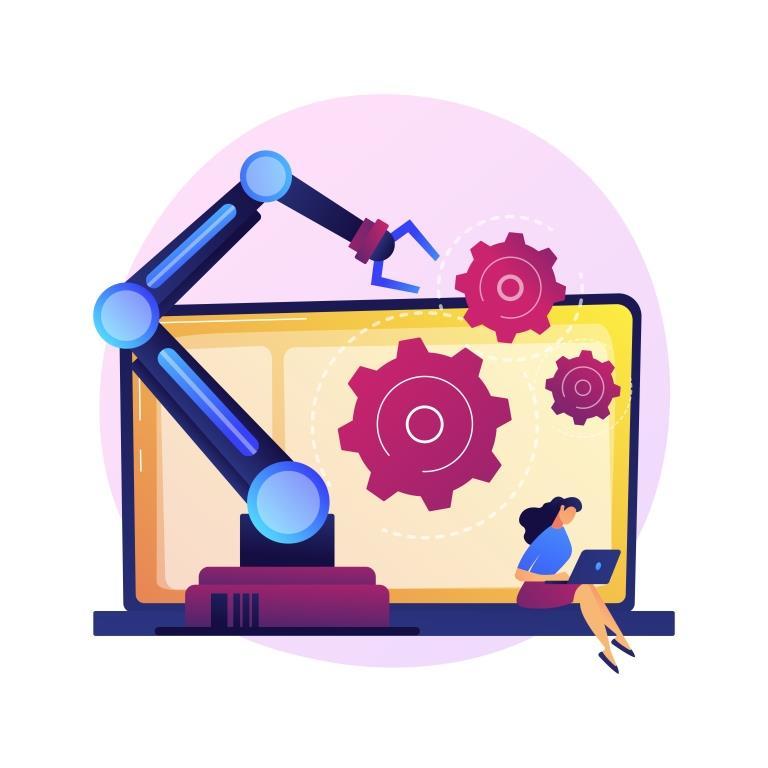29.07.21
The standard EN ISO 13849-1:2015 "Safety of machinery - Safety-related parts of control systems - Part 1: General principles for design", which is harmonized with the Machinery Directive 2006/42/EC, and EN ISO 13849-2:2012 "Safety of machinery - Safety-related parts of control systems - Part 2: Validation" contain the requirements and design principles for the verification and validation of safety-related parts of control systems, which also includes safety-related software. The standard distinguishes between SRESW, SRASW and software-based parameterization.
SRESW refers to embedded software. This is a software that is programmed for a special hardware. An example of this is the firmware that is executed on the PLC or microcontrollers. Typical programming languages for embedded software are C, C++ and Assembler. These programming languages are also called "programming languages with unrestricted language scope (FVL - Full Variable Language)". SRESW is therefore software that is programmed for a specific hardware, fulfills a safety function and is programmed in a FVL. SRESW is developed and supplied directly by the manufacturer of the hardware and can be kept up-to-date by means of firmware updates.
The term SRASW describes the user software. This user software, called application for short, is a computer program for creating and commissioning software for a PLC. The best known user software in the field of machine controllers are probably the "TIA Portal" from Siemens AG or the "Automation Studio" from B&R Industrial Automotion GmbH. SRASW is therefore a computer program for the user to create a safety-related program for a machine. SRASW is usually programmed with a programming language with limited language scope (LVL - Low Variable Language). Typical examples are ladder diagrams and function block diagrams.
Chapter 4.6 of EN ISO 13849-1:2015 specifies the software safety requirements. The software requirements depend on the use case (SRESW, SRASW) on the one hand and on the required performance level of the safety function on the other. The main goal is to obtain a comprehensible, understandable and easy to maintain software. To make this possible, EN ISO 13849-1:2015 applies the simplified V-model of the software safety lifecycle.

Figure 1 - Simplified V-model of the software safety lifecycle (Figure 6 in EN ISO 13849-1:2015)
The requirements of the software are described very generally in the standard. The German Social Accident Insurance e. V. (DGUV) has therefore issued the following publications to support users and manufacturers. For the SRASW, there is the matrix method of the Institute for Occupational Safety and Health (IFA), described in the IFA Report 2/2016, and the associated software tool "SOFTEMA - Software of Controls on Machines". For the SRESW, the IFA Report 1/2020 was published to enable a practical implementation of this and to present the requirements of EN ISO 13849-1:2015 in more detail.
If you have any questions or need support, please do not hesitate to contact us. We are happy to support you with the verification and validation of your software!
